Table of Contents
Blog Audio
When most people think of exercise and fitness they typically think of improving strength and cardiovascular function. While these are very important, most people rarely consider balance as an integral part of health and well-being.
Balance is a very crucial part of staying healthy, fit, and sustaining an active lifestyle. The balance system is an intricate system that relies on multiple bodily functions such as muscles/joints, sensation, flexibility, cardiovascular, neuromuscular, and yes even psychological systems.
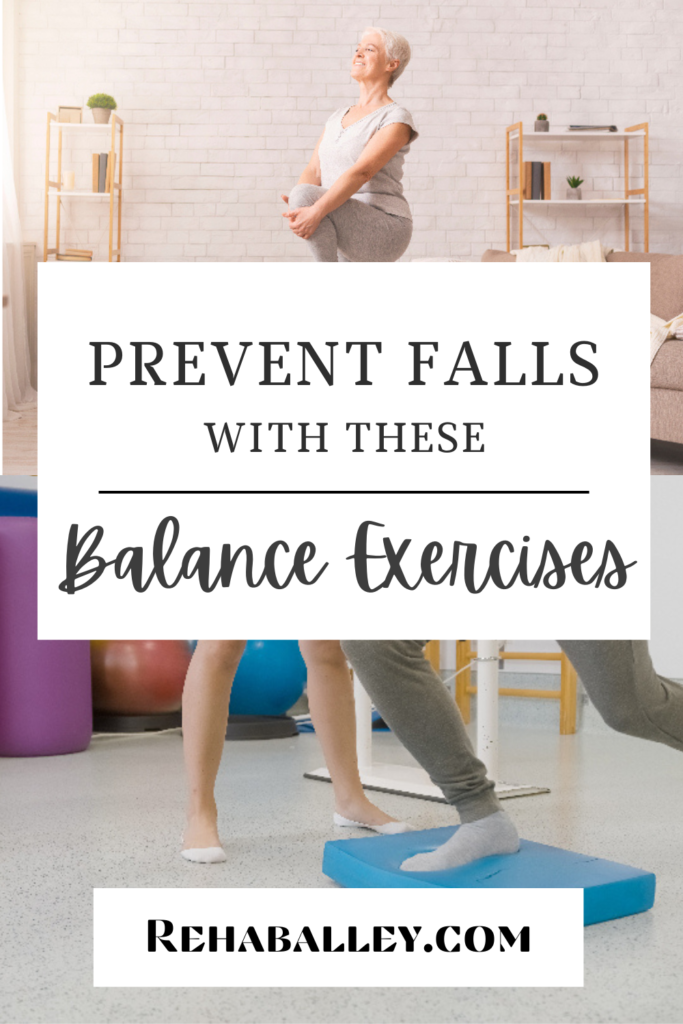
According to a Systematic Review titled “Associations of objectively measured physical activity and sedentary behaviour with fall-related outcomes in older adults: A systematic review” (LINK), researchers concluded that a fear of falling is associated with less physical activity and more sedentary behavior indicating a psychological barrier to an active lifestyle.
Property of Rehaballey.com
Therefore, balance is often correlated with your activity level, and how each of these bodily systems function. For example, a decrease in muscular strength or cardiovascular function can lead to less physical activity and a more sedentary lifestyle.
This in turn, further decreases the strength of the muscles which negatively impacts balance leading to an increase in falls and reduced activity due to a fear of falling.
On the other hand, the more your balance improves, the more confident you will become in completing daily activities. The more active you become can lead to improvements in muscular, cardiovascular, and neuromuscular systems.
This in turn helps to reduce fall risk leading to an increase in confidence and the cycle continues.
Property of Rehaballey.com
If you or your loved one falls into this category, do not worry. In this blog, I provide details on how to improve your balance system and give examples of exercises that are commonly used in physical rehabilitation to improve those with balance deficits. So without further ado, let’s dive in and get you back on your feet.
Importance of Improving Balance
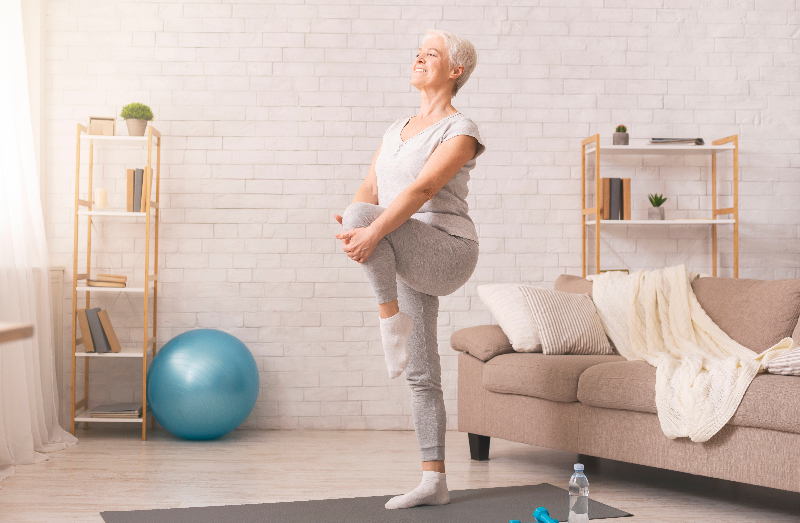
- The body relies on 3 main systems to maintain good balance: The visual system, Proprioceptive input, and The vestibular system.
- The visual system has the strongest influence on overall balance and works by using visual input to help maintain proper upright orientation as it relates to the surrounding environment.
- Visual impairments such as glaucoma, cataracts, macular degeneration, and diabetic retinopathy can have a substantial Effect on your overall balance.
- The vestibular system is a balance organ positioned within the inner ear and uses fluid motions within the canals to determine the position of your head as it relates to the rest of your body. The sensory input from the vestibular system then gets sent to the brain for interpretation.
- The primary impairment that affects the vestibular system is BPPV or Benign Paroxysmal Positional Vertigo.
- BPPV is caused when tiny calcium crystals are misplaced within the balance organ of the inner ear causing vertigo and a sensation of the room spinning.
- Proprioceptive input uses pressure and stretch receptors located in the joints, muscles, and tendons. These receptors are sensitive to changes in your joints that determine the position of your arms, legs, and other parts of the body.
- Some causes of decreased proprioceptive input include:
- Neuropathy
- Arthritis
- Edema
- Burns
- Disc herniation
- Stroke
- Spinal cord injury
- Autoimmune Disorders
- Brain injury
- Some causes of decreased proprioceptive input include:
- The visual system has the strongest influence on overall balance and works by using visual input to help maintain proper upright orientation as it relates to the surrounding environment.
- Balance declines with age and onset of chronic diseases which increase the risk for falls and fall-related injuries.
- As you age, your 3 main balance systems as well as your musculature and cardiovascular systems start to decline. This impacts your overall balance placing you at increased risk for falls and injury.
- Balance systems can also be impacted by diseases such as diabetes, heart disease, peripheral vascular disease, stroke, and the complications that arise with these diseases such as peripheral neuropathy, visual impairments, chronic fatigue, weakness, and bowel and bladder issues.
- It is also important to take into consideration the impact that medications have on balance as well. Often time medications used for pain, blood pressure management, cholesterol management, glucose control, thyroid, sleep disorders, anxiety etc, also may cause symptoms such as dizziness, vertigo, headaches, and sleep disturbances That negatively impact balance as well.
- Impacts quality-of-Life and Independence
- Individuals who are at an increased risk for falls tend to lead less active lifestyles and rely more on others for assistance with daily tasks reducing independence, and increasing caregiver burden.
- Decreased balance can lead to decreased confidence while performing everyday tasks such as transferring, walking, and climbing stairs. This often leads to less activity and a sedentary lifestyle which increases fall risk and fear of falling.
- As individuals with balance deficits become more and more sedentary, this can lead to a decline in muscle strength and cardiovascular endurance which further contributes to increased balance deficits and health complications.
Overview of the Airex Balance Pad (LINK)
- The Airex Balance Pad is made of 6” thick foam with a smooth hygienic layer that can be easily cleaned.
- The foam challenges the body to maintain its balance which not only strengthens the balance systems, but also strengthens the joints and muscles of the core, arms, and legs.
- The Airex Balance Pad can be used for various types of training and therapeutic needs which include (LINK):
- Fitness and Exercise
- Physio and Rehabilitation
- Yoga and Pilates
- Children, Schools, and Associations
Benefits of Using A Balance Pad
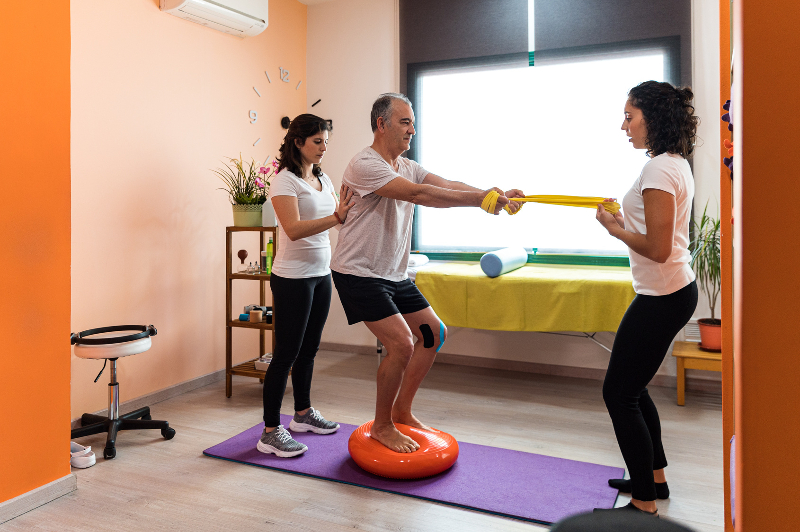
- Balance using ankle strategy
- Ankle strategy is a neuromuscular process involving continual and rhythmic muscular contractions around the ankles used to maintain overall balance. Ankle strategy is the most common strategy used for small balance disruptions.
- Perturbation in the ankles improves proprioception
- Balance using ankle strategy can also be a good exercise to rehab and strengthen the ankles after an ankle injury
- Improves Core Stability
- As standing balance tasks progress and become more challenging, muscles in the core, back, pelvis, and glutes activate to keep you stable.
- As the core muscles continue to contract, overtime will lead to improvements in neuromotor function and strength.
- Improving core strength is important because your core helps to keep your body aligned, improve balance and posture, and prevent injuries during moderate to high-impact activities
- Enhances Performance of Everyday Tasks
- As your balance and strength begin to improve, you may notice that everyday tasks such as standing from a chair, climbing stairs, walking on various terrain, and reaching for objects overhead and underneath start to become easier and more efficient.
- This not only builds confidence leading to a more active lifestyle, but enhances functional independence, reduces fall risk, and decreases caregiver burden.
- Supports the joints
- The Airex balance pad can be used to improve balance and strength in other positions as well, such as:
- Tall Kneeling
- kneeling on both knees
- Quadruped Exercises
- Prone on elbows
- lying on your stomach while the upper body is supported on your elbows.
- Planks/Side Planks
- Balancing while supported on your hands and feet with trunk and knees completely off of the floor/surface.
- The Airex balance pad can be used to support the joints during these various positions to prevent discomfort and reduce the risk of injury.
- Tall Kneeling
- The Airex balance pad can be used to improve balance and strength in other positions as well, such as:
Safety Tips Before Starting
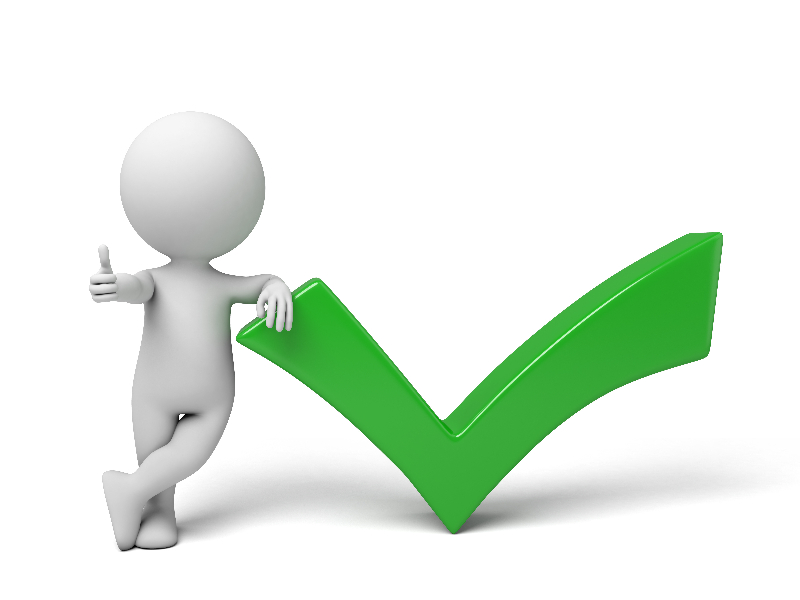
- Make sure to perform these balance exercises near a counter, A stable surface, or use an assistive device for support as needed.
- Make sure to have a caregiver or healthcare professional present during these balance exercises to minimize risks of injury or falls.
- Inspect the balance pad for microtears before using
- Use dycem (LINK) or A non-slip device under the balance pad if you are on A slippery or hardwood floor
- Know your body
- Immediately stop the activity if feeling dizzy, increased fatigue, or pain.
- Make sure to speak with your doctor, therapist, or other healthcare-related professional for clearance before starting any new exercise regimen or routine.
DISCLAIMER: By continuing you are agreeing to this disclaimer. Click the link for full disclosure of the disclaimer policy (LINK)
Exercises (Static)
Feet Shoulder Width Apart


- Start by standing on the balance pad with your feet shoulder-width apart. Hold onto a countertop or assistive device for support until you are ready to start the exercise.
- Slowly lower your arms down by your side, and maintain this position for 20-30 seconds. Repeat the steps for 3-4 repetitions.
Feet Together
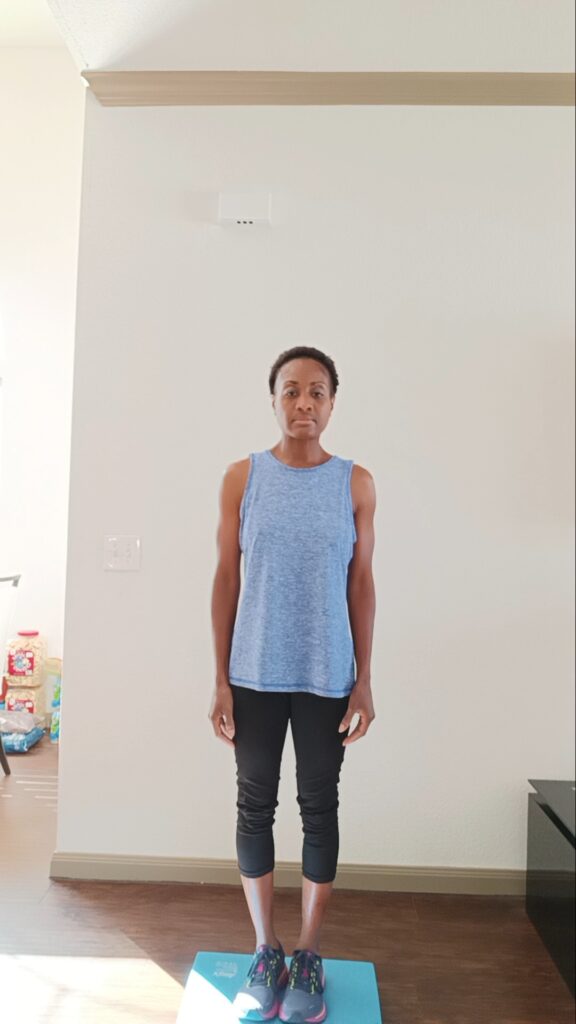
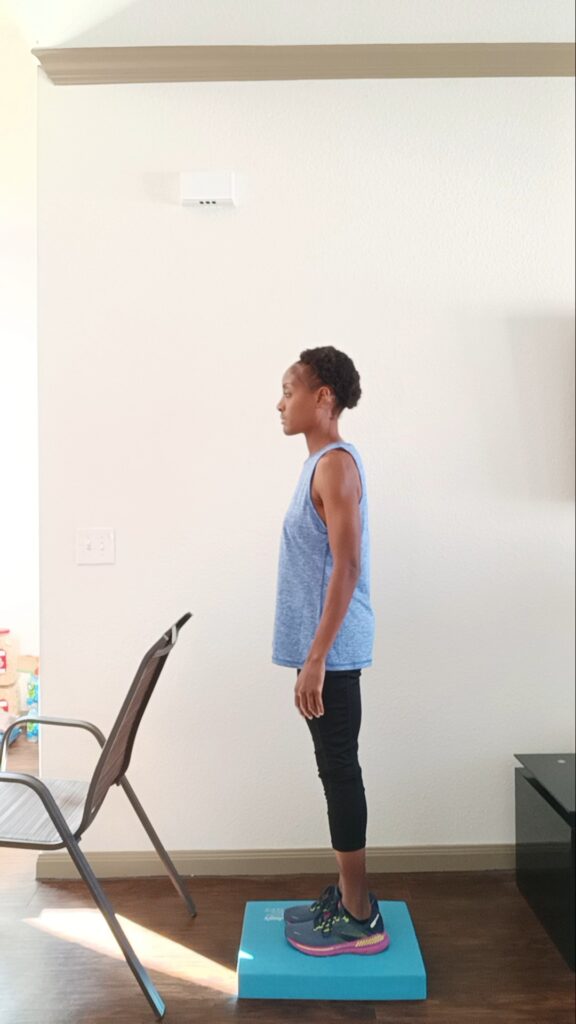
- Stand on the balance pad with your feet touching. Remember to hold onto a stable surface until you are ready to start the balance exercise.
- Slowly lower your arms down by your side and maintain this position for 20-30 seconds. Repeat for 3-4 repetitions.
Tandem Standing
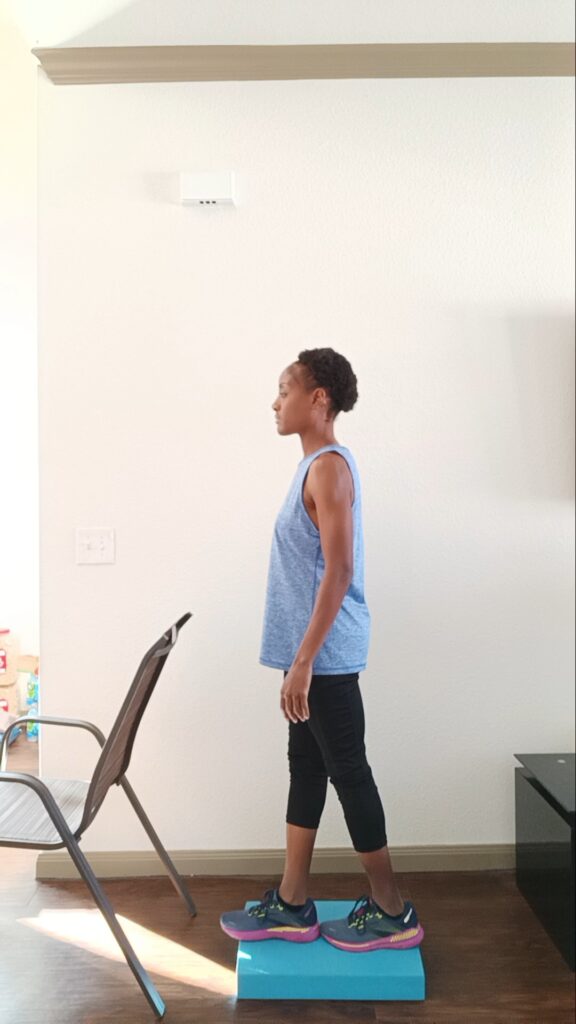
- Stand on the balance pad with 1 foot directly in front of the other, as if walking a tightrope. Hold onto a stable surface until you are ready to begin the exercise.
- Slowly lower your hands from the surface and maintain this position for 20-30 seconds. Switch by placing the opposite leg in front and hold for an additional 20-30 seconds. Repeat each side for 3-4 repetitions.
Single-Limb Stance
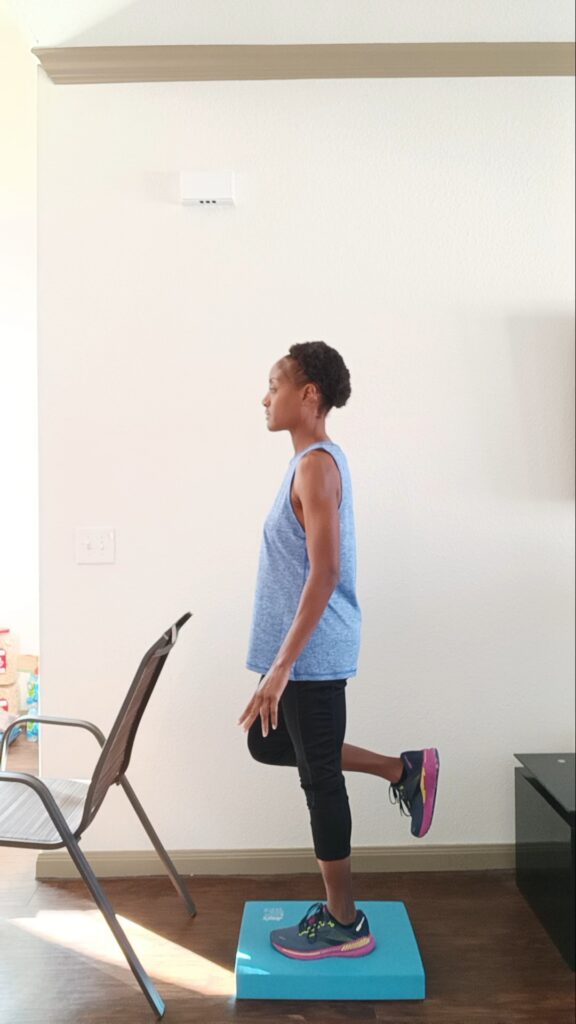
- Start by standing on the balance pad with your feet shoulder-width apart, and arms supported on a stable surface.
- Slowly bend one leg back until your foot is completely off of the pad.
- Lower your arms down by your side and try to maintain this position.
- Since this is a more difficult balance progression, hold for as long as possible starting off, then slowly increase your time as your balance improves.
- Repeat this exercise using the other leg.
Alley Tips: Single-limb stance on a balance pad is not recommended for individuals just starting off with their balance routine.
Property of Rehaballey.com
This exercise is meant as a progression only if you feel comfortable. Feel free to omit or discontinue any of these exercises if you do not feel comfortable.
Exercises (Dynamic)
After you have completed the static balance exercises and feel comfortable progressing to the next level of exercises, then dynamic balance exercises on a foam pad will be an excellent place to start.
Unlike static balance exercises, dynamic balance exercises involve movements of either the upper extremities or lower extremities while standing on the balance pad. Examples of dynamic balance exercises include:
Minature Squats
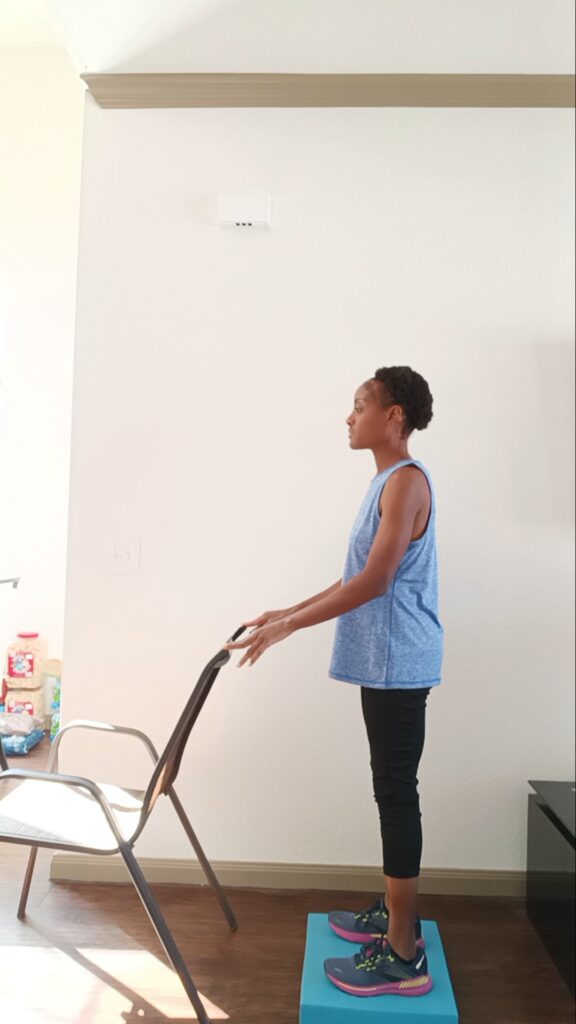
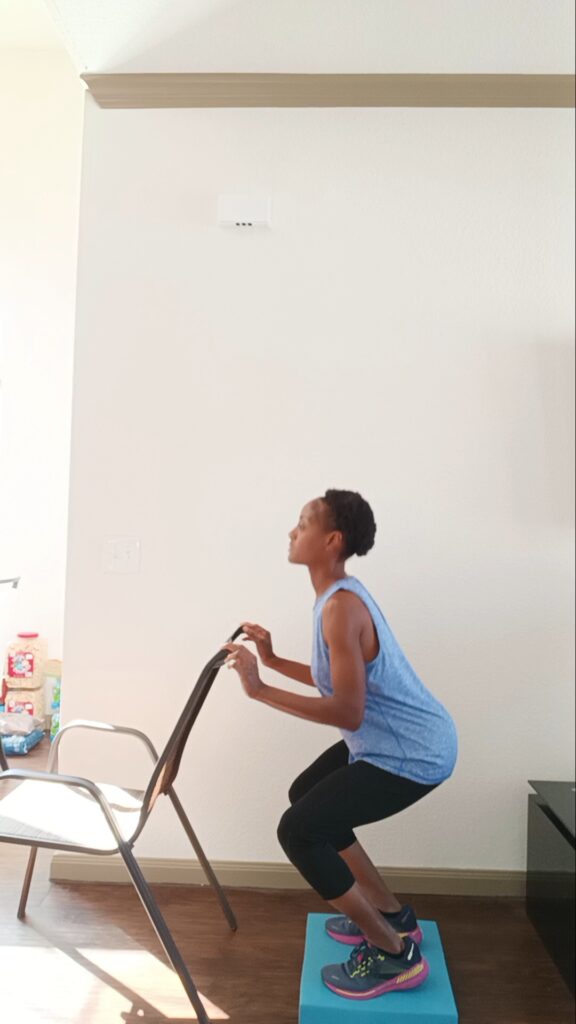
- Start off by standing on the balance pad with your feet shoulder-width apart. Hold onto a stable surface until you are ready to start the balance exercise.
- Slowly bend your knees halfway down, then slowly straighten your knees back upright. Repeat for about 20-30 repetitions
- Feel free to hold onto a stable surface first, then progress to performing this exercise without holding on to a surface for more of a challenge.
Standing Marches
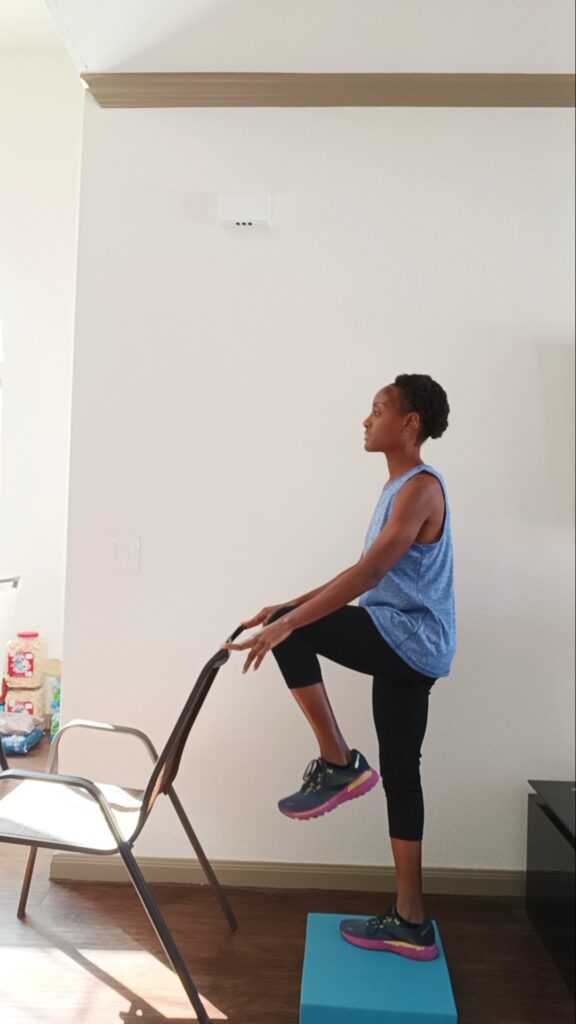
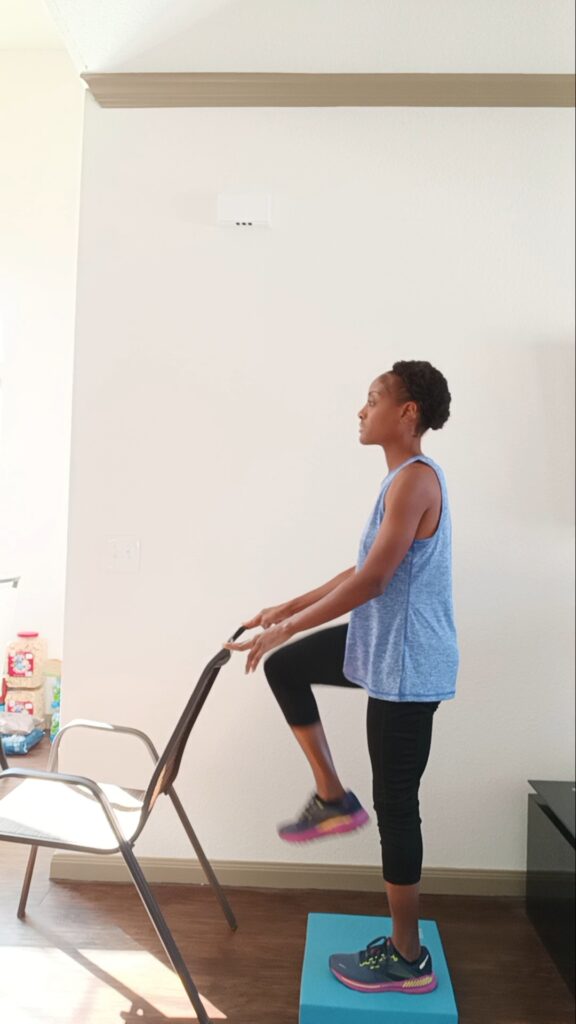
- Start by standing on the balance pad with your feet shoulder-width apart. Make sure to hold onto a stable surface until you are ready to start the exercise.
- Lift one leg off of the balance pad by bending your knee out in front, then alternate and repeat on the other side. Repeat for about 20-30 repetitions.
- As mentioned above, start off by holding onto a stable surface then progress to performing this exercise without holding on.
Step-ups
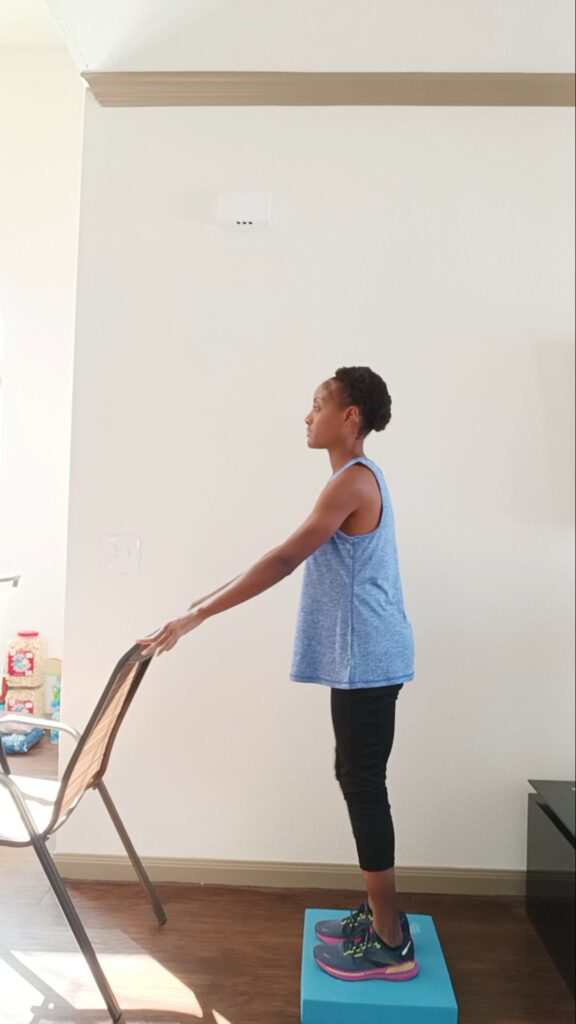
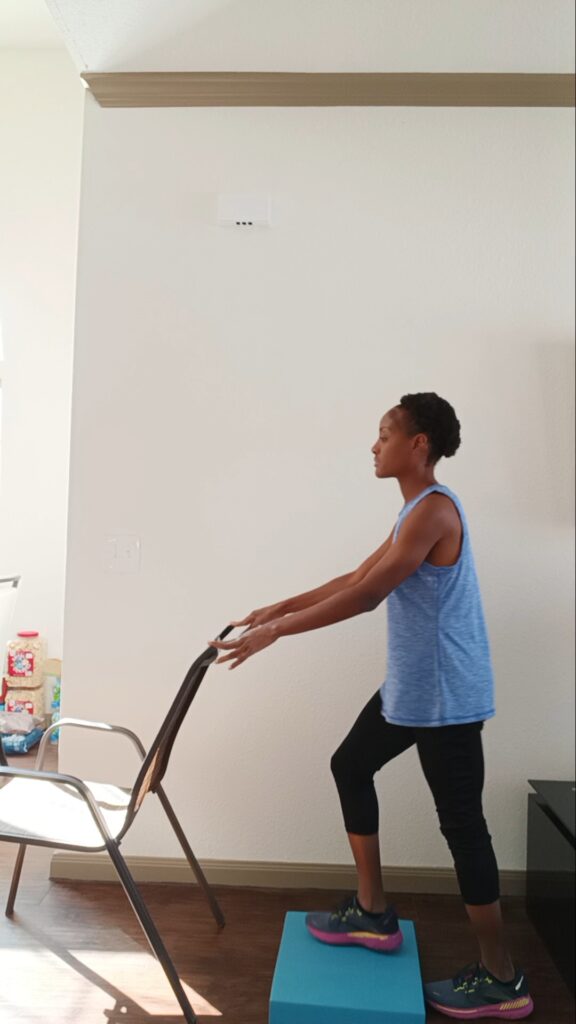
- Start off by standing behind the balance pad with your feet shoulder-width apart.
- Step up onto the balance pad with one foot, followed by the other foot.
- Step back down behind the balance pad leading with the same leg you initially step onto the pad with.
- Perform 10-20 repetitions, then repeat this exercise leading with the opposite leg.
- Make sure to start off by holding onto a stable surface if needed, then slowly progress to performing this exercise without holding on.
Lunges

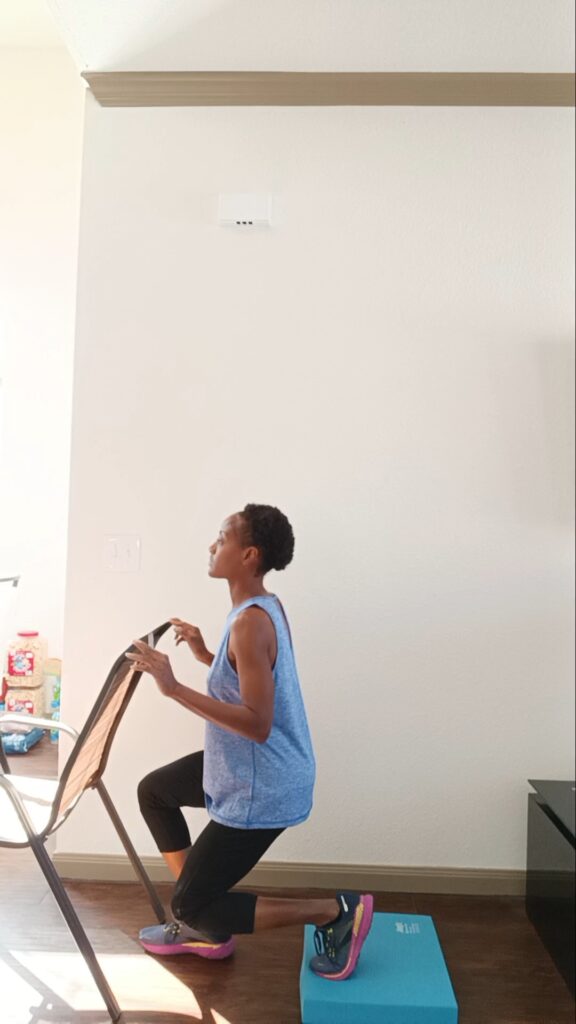
- Start by standing on the balance pad with your feet shoulder-width apart. Hold onto a stable surface until you are ready to begin the exercise.
- Step one foot forward off of the balance pad and slowly bend both of your knees. (Do not bend your knees past your toes).
- Extend both of your knees, then step your front leg back onto the balance pad.
- Perform for 10-20 repetitions then repeat this exercise with the opposite leg.
- You can also repeat the steps above, only this time stepping one foot backward off of the balance pad.
Alley Tips: As mentioned above, it is recommended that you have someone nearby to watch and assist you through the balance exercises. Rehab Alley also highly recommends performing these exercises in front of stable surface such as a counter, table, or with an assistive device for safety in case you lose your balance.
Property of Rehaballey.com
The repetitions and frequencies of each exercise are general recommendations only. Feel free to alter the repetitions and frequencies to best fit your individual needs.
Click the Video Below To Watch Full Video
Progression Strategies
There are several different ways you can make the exercises listed above more challenging once your balance has improved. Some examples of challenging activities include:
- Adding Head, Trunk, and/or Upper Extremity Movements such as:
- Looking up and down
- Looking side-to-side
- Rotating trunk side-to-side
- Rotating trunk diagonal
- Closing your eyes while completing the exercises
- This increases the need for more vestibular input which challenges the balance organ of the inner ear.
- This progression is recommended only for static standing exercises.
- Adding Perturbations such as:
- Ball Toss
- Ball bounce
- Adding dual-tasking activities such as:
- Matching and/or playing cards while standing on the balance pad
- Drawing, coloring, or completing puzzle activities
- Cognitive tasks such as trivia games and solving riddles
- Balancing while performing video interactive/virtual reality games
Improving your standing balance is one of the best ways you can improve your quality-of-life, independence, overall health, overall mobility, and reduce the risk of falls. Hopefully, the information above will help get you started in the right direction toward improving your balance.
Property of Rehaballey.com
If you are an older adult who lives alone or has medical complications, I highly recommend purchasing a medical alert system. This system provides you access to a medical emergency operater with just one click of a button.
Click HERE (LINK) for more information on the medical alert system that I recommend. For additional resources, blog content, and product recommendations, feel free to visit my website at www.rehaballey.com. GOD BLESS YOUR ENDEAVORS!

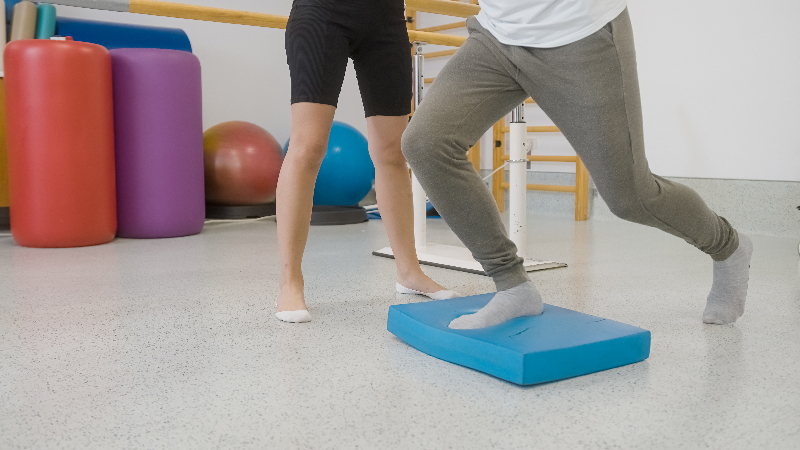


Thank you for all the information. Very good article and useful information.
I’m so glad you found this article helpful. Let me know if you have any ideas for future articles, questions, or concerns. I will be happy to assist you.